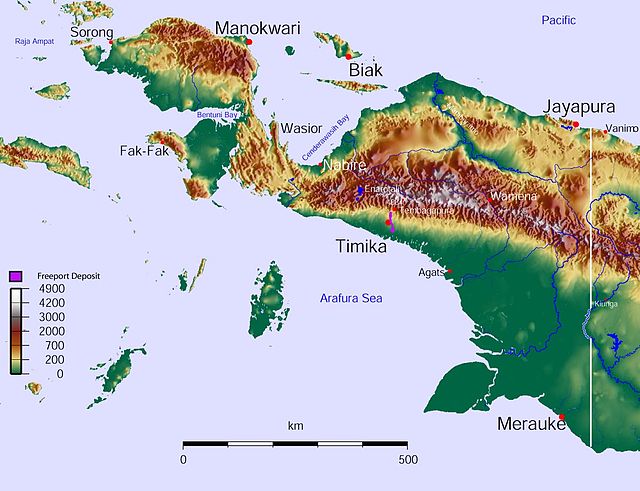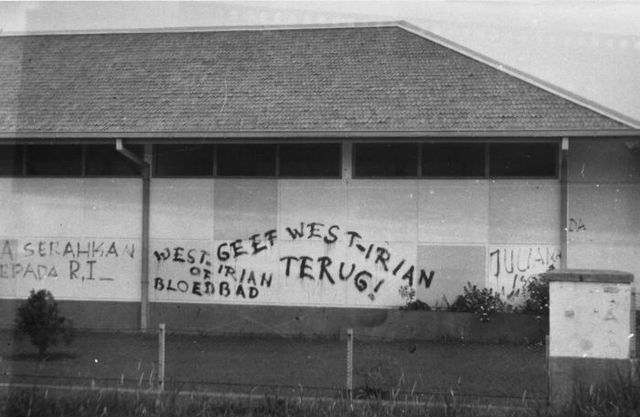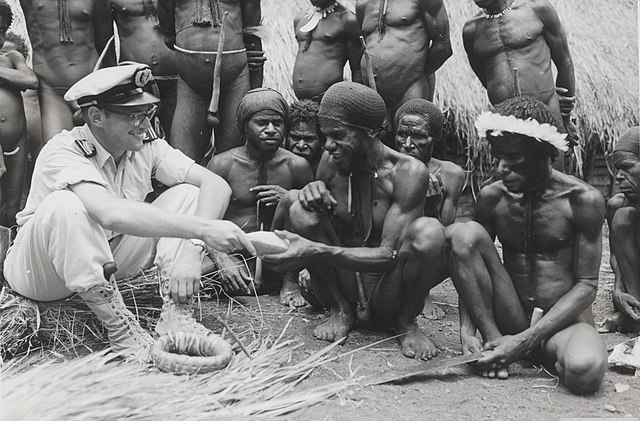The West New Guinea dispute (1950–1962), also known as the West Irian dispute, was a diplomatic and political conflict between the Netherlands and Indonesia over the territory of Dutch New Guinea. While the Netherlands had ceded sovereignty over most of the Dutch East Indies to Indonesia on 27 December 1949 following an independence struggle, it retained control over its colony on the western half of New Guinea. The Indonesian government claimed this territory as well, on the basis that it had belonged to the Dutch East Indies and that the new Republic of Indonesia was the legitimate successor to the former Dutch colony.
The disputed territory of West New Guinea
Dutch expeditions in Netherlands New Guinea 1907–1915.
The Indonesian first president Sukarno took a strong interest in West Irian
Graffiti against the presence of the Netherlands in West Irian.
Dutch New Guinea or Netherlands New Guinea was the western half of the island of New Guinea that was a part of the Dutch East Indies until 1949, later an overseas territory of the Kingdom of the Netherlands from 1949 to 1962. It contained what are now Indonesia's six easternmost provinces, Central Papua, Highland Papua, Papua, South Papua, Southwest Papua, and West Papua, which were administered as a single province prior to 2003 under the name Irian Jaya, and now comprise the Papua region of the country.
Steamboat connections in Ambon Residence, Dutch East Indies, in 1915
Dutch district officer Jean Victor de Bruijn, with Moluccan police and highland companions, on patrol east of Beoga, c. 1941
Dutch colonial civil servant in the Baliem Valley, 1958






